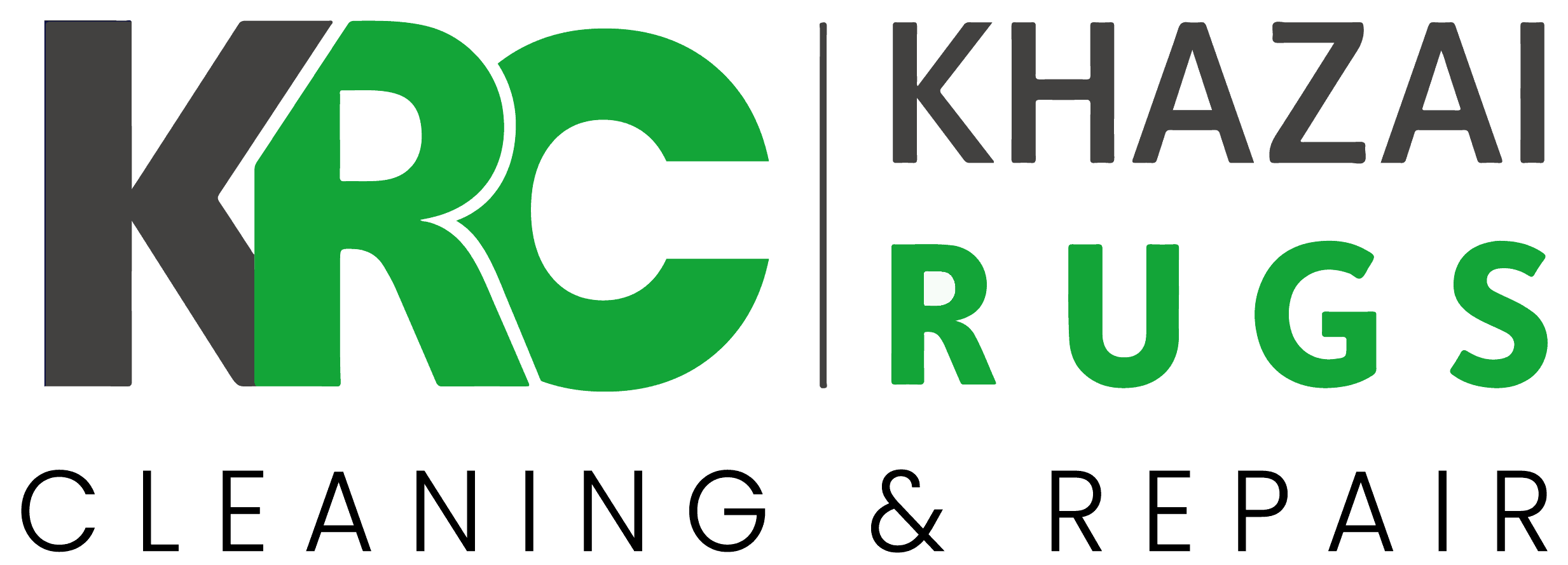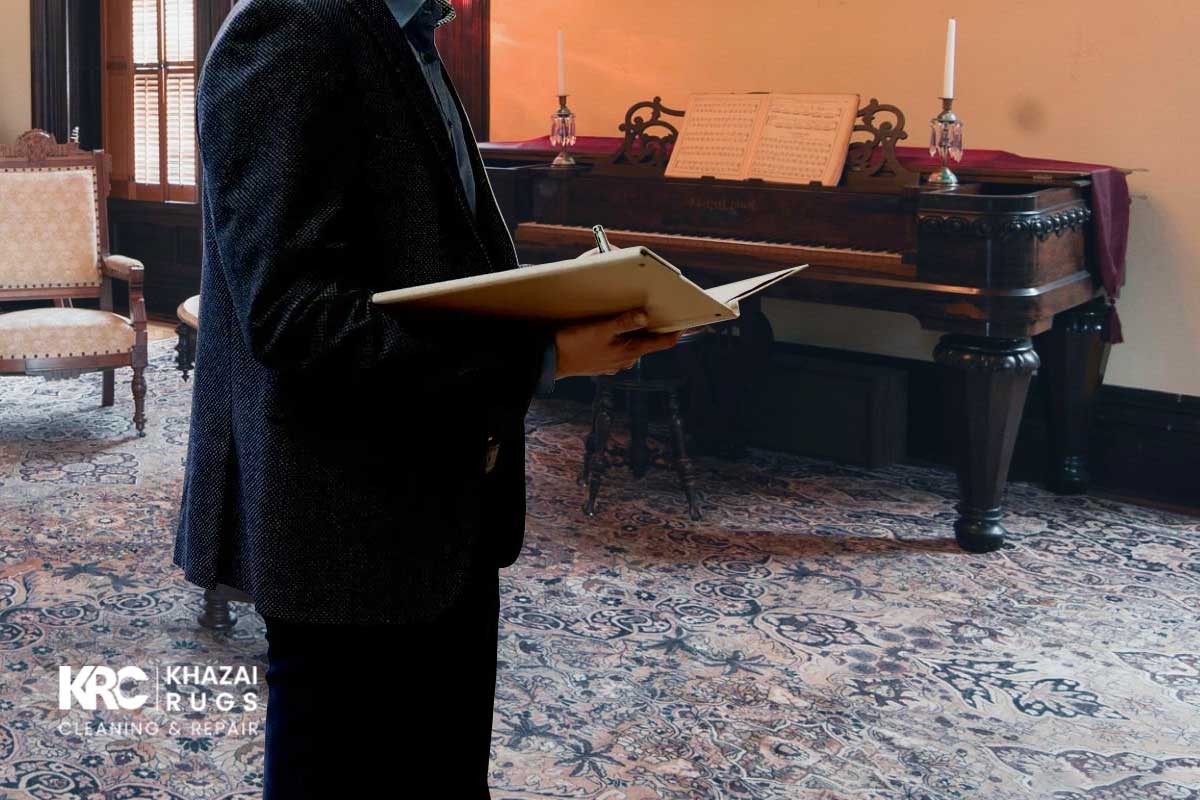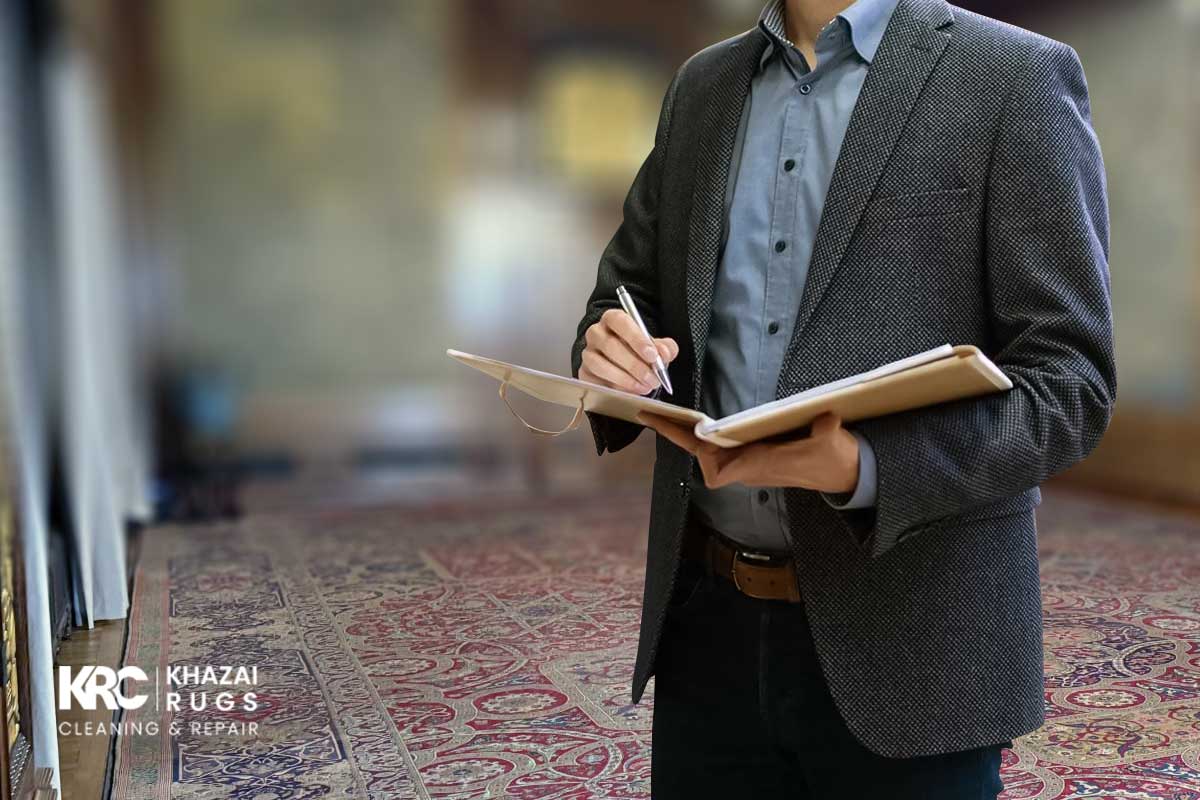There’s something timeless about a handmade rug. Whether it’s passed down through generations or bought on a whim from a corner shop in Istanbul, rugs can carry stories, culture, and in some cases, a whole lot of value. But how do you really know if that beauty under your feet is the real deal? That’s where rug appraisers come in. Their job? To dig into the fibers and find the truth. In this article, we’ll walk through how to authenticate a rug, what pros look for, what tools they use, how they spot fakes, and why proper documentation matters more than you’d think.
At Khazai Rug Cleaning, we don’t just clean and repair rugs. We understand them. Our appraisal service is grounded in decades of experience, and we know every warp, weft, and whisper of a rug’s history.
Why Authenticity Matters in Rug Appraisal
Rug appraisal isn’t just about slapping on a price. It’s about understanding the roots of a rug—literally and figuratively. A genuine antique rug can be worth thousands more than a lookalike mass-produced version. But the stakes go beyond money. Owners want to know their piece is authentic because it connects them to culture, history, or family.
Knowing how to authenticate a rug means having the confidence to assess its origin and value. And it helps rug owners make smarter decisions—whether selling, insuring, or even passing it down to family. It’s the difference between owning a masterpiece and owning a replica.
Key Factors Appraisers Use to Authenticate Rugs
Appraisers take rug analysis seriously. They don’t rely on guesswork—they use a combination of craftsmanship clues and scientific principles. Here are the core elements they analyze:
1. Weaving Technique
The way a rug is woven can tell you everything from its geographic origin to its age. Tribal rugs often have looser, more spontaneous weaving, while city rugs are usually more refined. Appraisers pay close attention to asymmetry, tightness, and how the knots are tied. That’s a big clue in learning how to authenticate a rug.
Hand-woven rugs will have irregularities—that’s their charm. Machine-made ones? Too perfect. And that perfection is often a red flag.
2. Knot Density (KPSI – Knots Per Square Inch)
High knot density doesn’t always mean higher quality, but it does offer some clues. An appraiser might take a magnifying glass and count the number of knots in a one-inch square. A Persian silk rug could hit over 600 KPSI, while tribal wool rugs sit much lower.
Knowing this helps determine if a rug was made for art or utility. And again, it plays into how to authenticate a rug with technical precision.
3. Material Composition
Is it wool, silk, cotton? Or something synthetic trying to play dress-up? Appraisers feel the fibers, examine them under light, and sometimes even do burn tests. Real wool has a smell and texture that synthetics can’t replicate.
At Khazai Rug Cleaning, we’ve handled everything from wool to camel hair, and we’ve seen how material speaks volumes about origin.
4. Dyes and Color Consistency
Appraisers love a good color story. Natural dyes have a certain depth and inconsistency that’s hard to fake. Synthetic dyes, on the other hand, often look too bright or too even.
Rugs with vegetable-based dyes might have slight fading or color variation, which is actually a good sign. It’s another tick on the how-to authenticate a rug checklist.
5. Origin and Design Motifs
Designs tell stories. Certain floral patterns, medallions, or borders are tied to specific regions and eras. An appraiser with experience can spot a Heriz from a Tabriz from across the room.
If a rug claims to be from Qom but its motif screams Bukhara, something’s off. Appraisers are trained to catch those mismatches.
6. Rug Structure: Warp, Weft, and Pile
Peeking under the rug reveals the warp and weft—the backbone of any hand-knotted piece. These threads, combined with the pile, tell an appraiser how the rug was made.
We know from our own repair work at Rug Repair Service that structure never lies. It’s like a rug’s fingerprint.
7. Age Indicators
Wear patterns, fading, and even the feel of the rug can hint at its age. Appraisers look for oxidation signs, fringe aging, and how the rug reacts to light. Authentic aging can’t be faked easily.
That’s one of the many reasons why appraisers are so good at how to authenticate a rug. They know what time looks like—and smells like.
Tools and Techniques Appraisers Use
No crystal balls here—just good old-fashioned tools and experience. Appraisers use magnifiers, microscopes, black lights, and even dye tests. But the most valuable tool? Their trained eyes.
At our Rug Cleaning Service, we often spot red flags while preparing rugs for appraisal. A machine-made edge, overly bright color, or even the smell of synthetic fibers can speak volumes.
Knowing how to authenticate a rug isn’t about flashy gadgets. It’s about intuition sharpened by years of hands-on learning.
What Appraisers Look for in Fakes or Reproductions
Modern reproductions can be stunning—but they’re not antiques. Appraisers spot fakes by watching out for:
- Symmetrical knots that are too perfect
- Synthetic fibers disguised as wool
- Sharp, bold colors with no signs of age
- Patterns that don’t match the claimed region
Sometimes, rugs are artificially aged to pass as older pieces. But trust us, a rug that’s been dipped in tea or roughed up with chemicals won’t fool a trained eye. Part of learning how to authenticate a rug is knowing how deception looks under a loop.
Importance of Certification and Documentation
A proper appraisal doesn’t just give you a number. It gives you peace of mind. A certified appraisal from a trusted source like our Rug Appraisal Service helps with insurance, resale, and inheritance.
Documentation becomes part of the rug’s story. It follows it through moves, sales, and generations. It’s how to authenticate a rug in a way that holds up over time.
Conclusion
Authenticating a rug isn’t just about microscopes and fiber tests—it’s about storytelling, intuition, and experience. At Khazai Rug Cleaning, we’ve seen thousands of rugs, each one whispering its own tale through texture, color, and weave.
Whether you’re hoping to pass down a family heirloom or just want to make sure your flea market find is the real deal, knowing how to authenticate a rug is essential. Our Rug Pet Stain Removal Service has even helped reveal the hidden beauty in rugs people thought were ruined.
The point is this: every rug has a story. And with the right eyes, that story can be told clearly, honestly, and beautifully.




